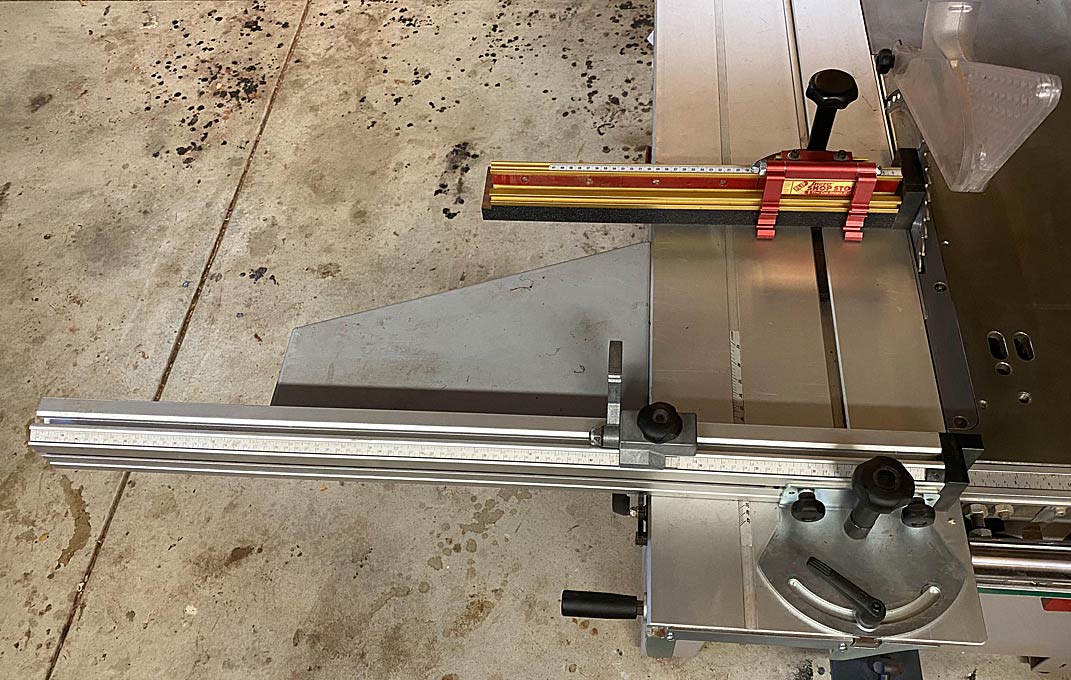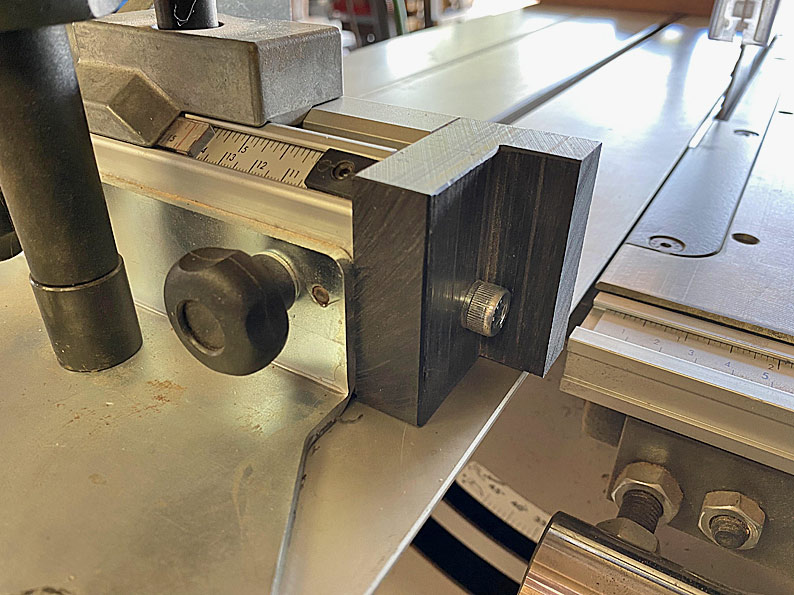Those who understand how a Fritz and Frans jig can revolutionise a sliding table saw, generally use a long slider table, and push the work piece against the far fence.
This one is courtesy of Google ...
If you have no experience with this jig, view this short video ...
https://www.youtube.com/watch?v=uVUgjr_Iw1w
Those with a shorter slider table, such as mine (1250mm/49"), can still use the slider to rip, however this is less simple. For a start, the crosscut fence is at the beginning of the slider table ...
... and attempts to replicate the larger sliders involve building a crosscut fence at the end. This was my Fritz & Frans jig ...
It worked for ripping ...
... but it was a pain to have to set up the far crosscut fence each time.
It occurred to me that I was doing this all wrong. What was suitable for a long sliding table was not suitable for a short sliding table. Their crosscut fences were at opposite ends. Therefore I decided to build a reversed F&F jig, that is, where the work piece was pushed against the crosscut fence at the beginning of the sliding table. The first build was to test the idea. This worked well enough to build the current version ...
This is the sliding section ...
The Incra fence has stops for accurate measurement of width. The front edge has non-slip.
There is a scale to set the stops ..
The handle at the rear is important ...
I suspect that no one else has built a reversed F&F, and the reason for not doing so is that pushing the work piece against the front fence, and also pulling the slider past the fence, are incompatible actions.
For this reason the handle at the rear serves to control the entire action: Push the work piece against the fence, then twist the handle and lock it in place ...
A little while ago, I began working towards this design by adding a zero clearance extension to the crosscut fence ...
Now this enables very accurate rips using the sliding table ...
Regards from Perth
Derek




















 Reply With Quote
Reply With Quote